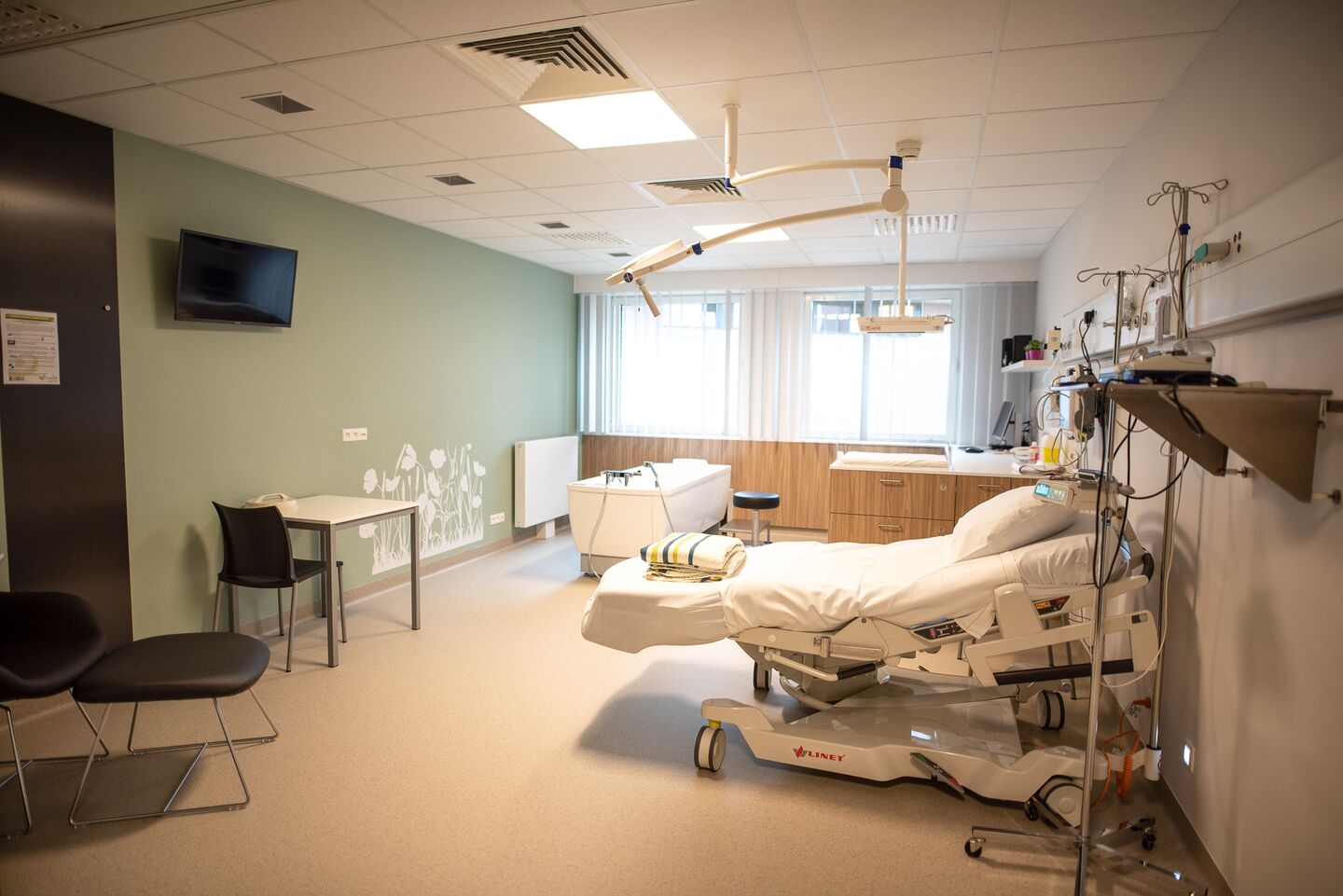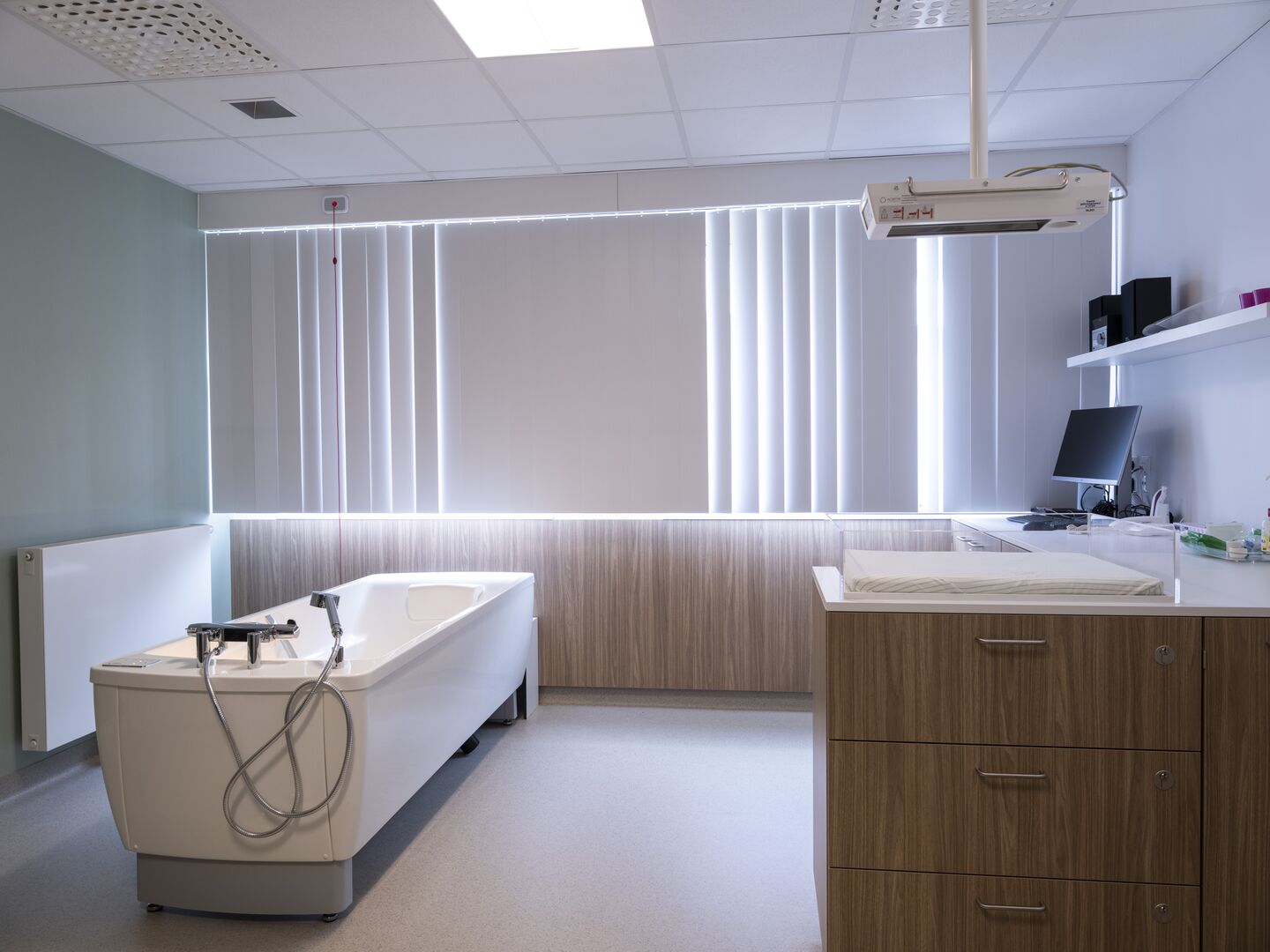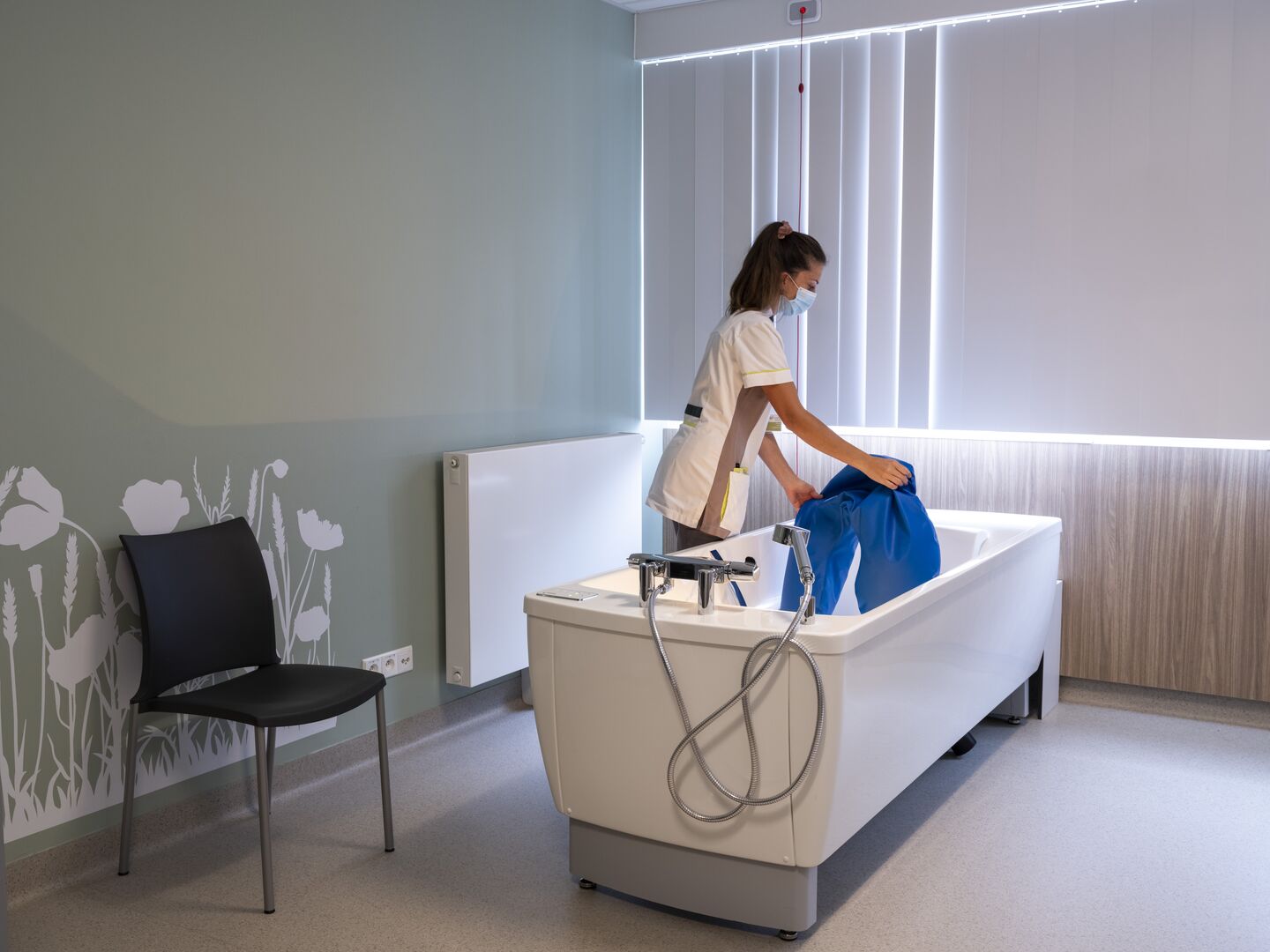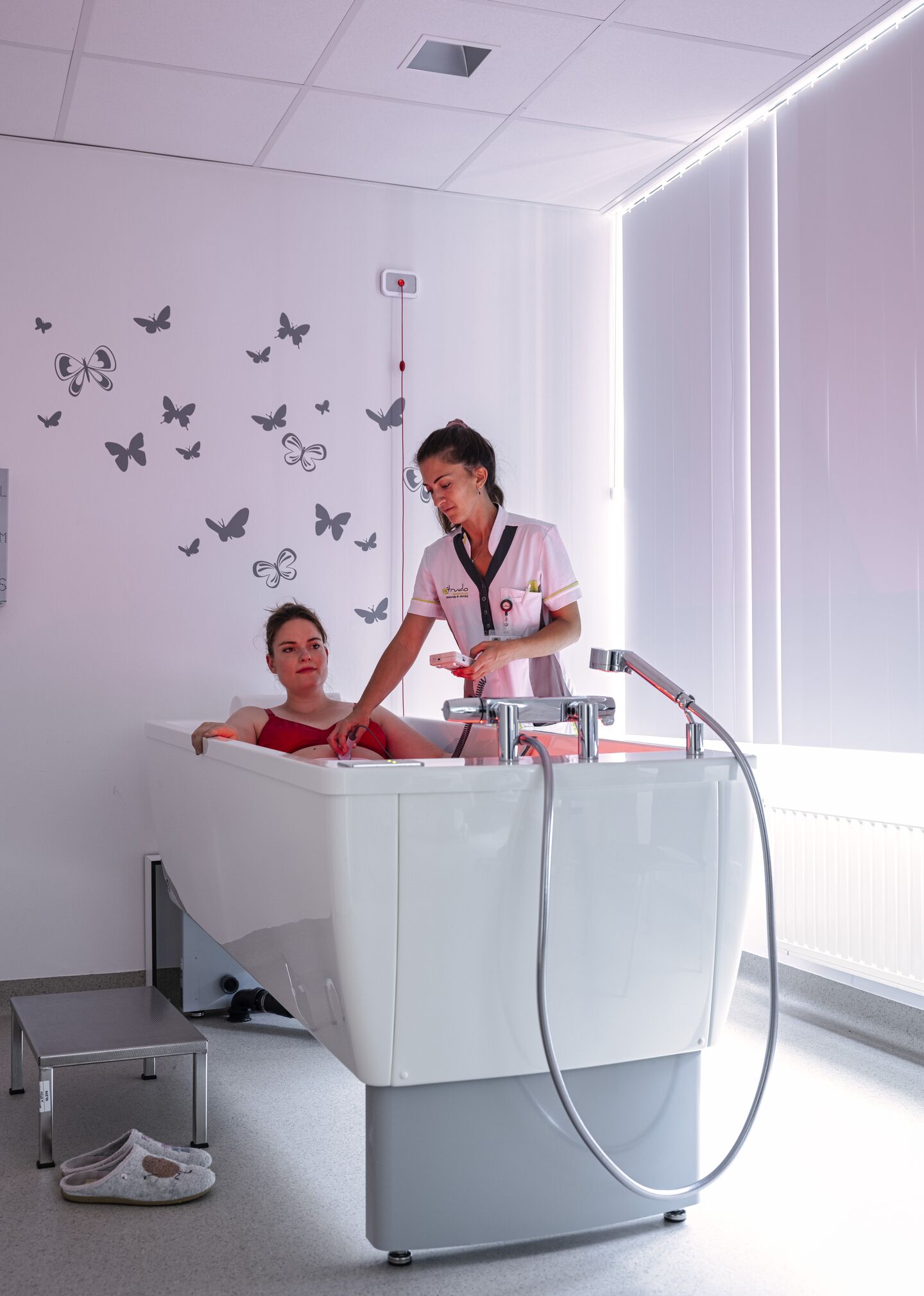Childbirth
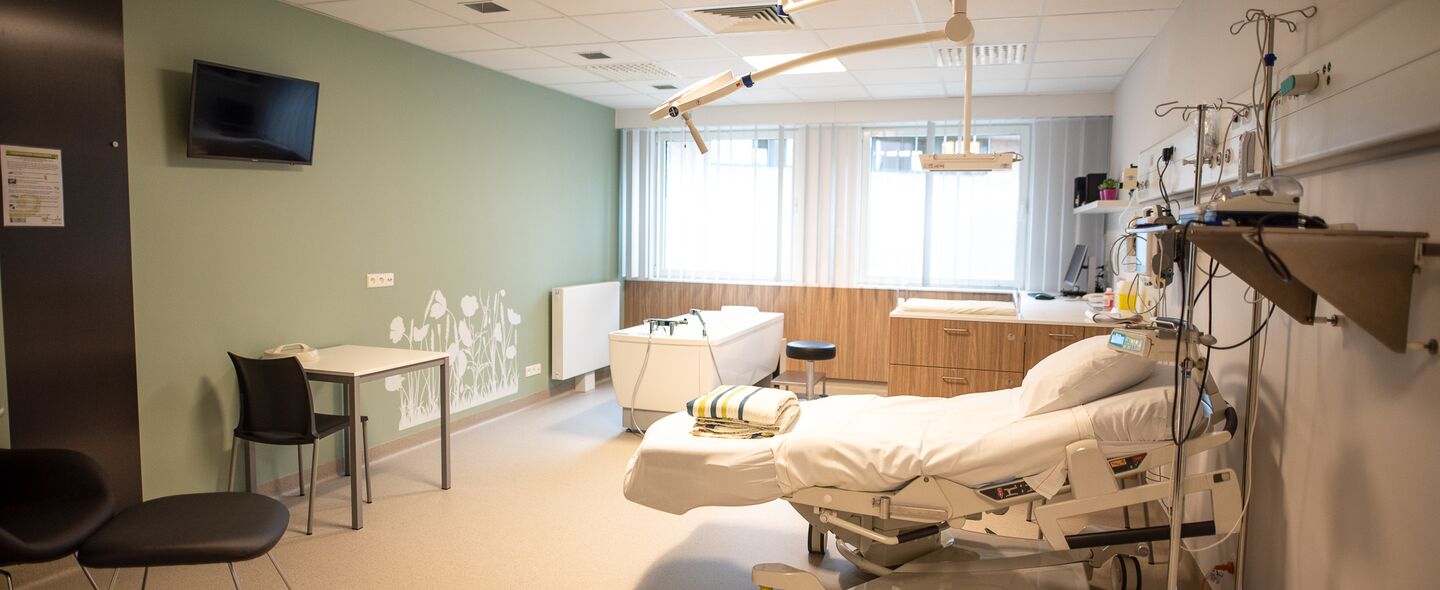
Delivery usually announces itself in one of the following ways:
- breaking of the membranes (loss of amniotic fluid): the amniotic fluid may flow out drop by drop or in a large quantity.
- regular, painful contractions that can be felt in the abdomen and/or lower back: the contractions initially feel like menstrual pain. You may experience pre-contractions during the last weeks where your abdomen becomes hard. You can recognize the real contractions because they are regular and become increasingly severe.
For medical reasons it may be necessary to initiate labor. This is always done in consultation with your gynaecologist. There are different ways to induce labor that the doctor will discuss with you.
Frequently Asked Questions
The birth
During labor, the baby's heart tones and contractions are checked by the midwife. She will guide you to push with every contraction, as soon as the baby has lowered correctly and you have 10 cm dilation. The midwife can feel from your abdomen whether or not you are having a contraction. This may sometimes be necessary with an epidural, if you were not given anesthesia you will feel this yourself. When the baby is about to be born the gynaecologist is notified. He or she puts on an apron and sterile gloves and helps your baby be born.
If there are no complications, the baby will be placed on the mom's belly and dried. The umbilical cord will be shortened and the baby is given a shot of vitamin K. If you choose to breastfeed, the baby is also put to the breast for the first time at this point. After at least one hour of skin-to-skin contact, the baby is measured and weighed.
After the birth of the baby the placenta will also follow. The placenta is checked and blood is taken from the umbilical cord to determine the baby's blood type. After this, any cut or tear is sutured. Then you are brought to the maternity ward together with your baby and husband.
Pain relief
You can choose several options during labor to relieve pain. Hot water baths, finding relaxing positions on the ball and/or massaging the painful areas can all provide relief. If natural pain relief doesn't help enough, you may opt for epidural anesthesia.
Birthwish
You can think in advance about how you would like the birth to go. Good communication is important for an enjoyable birth experience. Therefore, discuss your wishes (and expectations) with the midwife and/or gynaecologist. You can make your preferences clear in terms of pain management, medical interventions, nutrition for the baby, delivery environment.... However, the midwife and gynecologist always act in the interest of mother and baby. Because of this, not everything may go according to the expected plan. Childbirth cannot be predicted and during labor you may think very differently about some choices.
The brochure below can help you get started.
